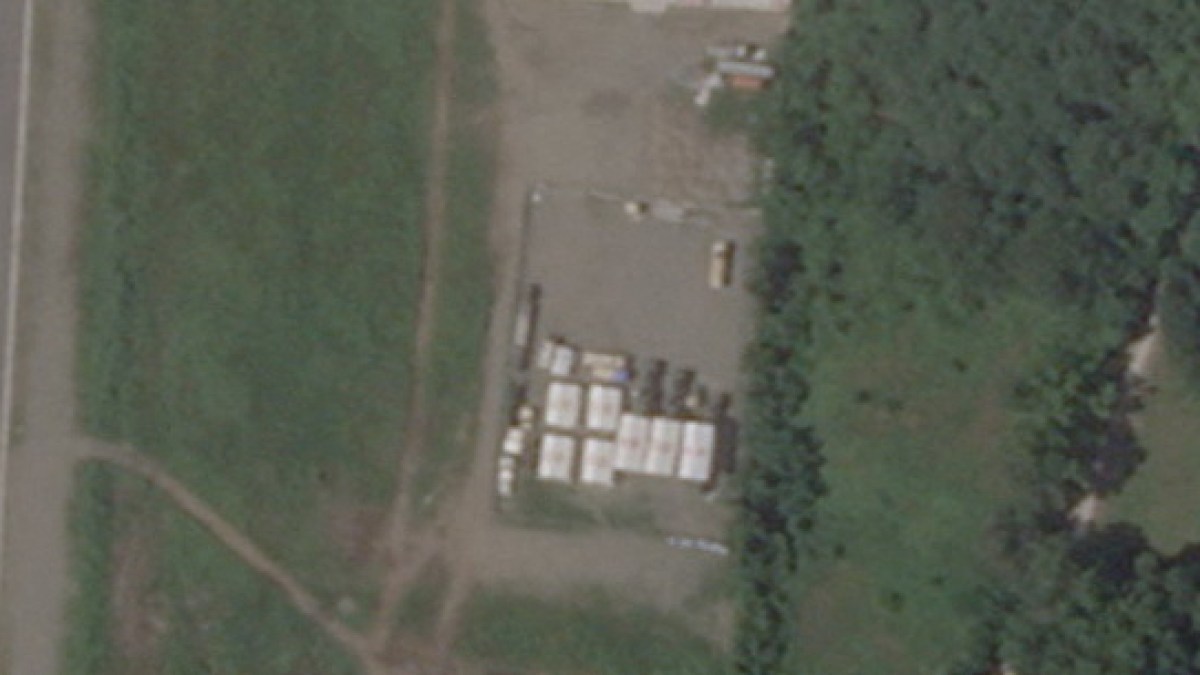Jannik Sinner’s doping case has been one of the biggest stories in tennis since shortly before the U.S. Open. On August 20, the International Tennis Integrity Agency (ITIA) — the worldwide anti-doping agency for the sport — announced that Sinner, the men’s world No. 1, had twice tested positive for clostebol, a banned anabolic steroid, in March 2024.
It also announced that an independent hearing, convened by the ITIA, had found Sinner bore “no fault or negligence” for those positive tests, accepting his explanation that he had been contaminated by a healing spray purchased by his physio, Umberto Ferrara. Sinner’s physiotherapist, Giacomo Naldi, used the spray on a cut on his hand and then subsequently gave Sinner a massage on his back and applied treatments to his feet.
Sinner parted company with Ferrara and Naldi, part of the team that took him to world No. 1, on the eve of the U.S. Open, which Sinner won against Taylor Fritz.
Then, on Saturday, 28 September, the World Anti-Doping Agency (WADA) announced that it would appeal the “no fault or negligence” ruling at the Court of Arbitration for Sport (CAS). WADA, which sits above the ITIA as the worldwide authority in sports doping is seeking “a period of ineligibility of between one and two years,” in which the two-time Grand Slam champion would be banned from playing tennis.
A week later, CAS confirmed its receipt of WADA’s appeal.
Here is everything you need to know about the case so far, why the appeal has been lodged, and what it means for Sinner and the sport as a whole.

GO DEEPER
World No 1 Jannik Sinner penalised after twice testing positive for banned substance
When did Sinner test positive?
Both of Sinner’s positive tests came in March this year. The first was an in-competition test on March 10 at the BNP Paribas Open held in Indian Wells, California. The second was an out-of-competition test on March 18.
What is clostebol?
Clostebol is an anabolic steroid. It is best known for its role in East Germany’s state-sponsored doping programs of the 1970s and 1980s. It shortens recovery times following intense workouts and allows for the expedited production of muscle mass, in a similar manner to testosterone. Its potential legitimate uses have included treating muscle-wasting disease and osteoporosis. It’s also an ingredient in certain healing creams and sprays that are readily available in Italy, though not in many other countries.
Sinner’s test samples contained 86 picograms/litre on 10 March, and 76pg/litre on 18 March, when adjusted for the application of a normal specific gravity.
“Even if the administration had been intentional, the minute amounts likely to have been administered would not have had any relevant doping, or performance enhancing, effect upon the player,” said Professor David Cowan, a member of the ITIA tribunal for its final ruling on the case.
What did the ITIA charge Sinner with?
The ITIA charged Sinner with violating Article 2.1 and Article 2.2 of the Tennis Anti-Doping Programme (TADP). Those articles govern “the presence of a prohibited substance or any of its metabolites or markers in a player’s sample,” and “use or attempted use by a player of a prohibited substance or a prohibited method.”
Both Articles are subject to Article 2.1.1, which states that it is “each player’s personal duty to ensure that no prohibited substance enters their body.”

Jannik Sinner was on court in Beijing when WADA confirmed its appeal into his case (Jade Gao / AFP via Getty Images)
What explanation did Sinner give?
Sinner stated that his fitness coach, Umberto Ferrara, had brought an over-the-counter healing spray containing clostebol to Indian Wells (under the brand name Trofodermin, the spray is available over the counter in Italy). Sinner’s physiotherapist, Giacomo Naldi, cut his hand and then used the spray on that cut. Naldi then conducted massages on Sinner, which led to transdermal contamination with the clostebol from the healing spray.

GO DEEPER
Jannik Sinner built the team that made him world No. 1. Then he blew it up
What did the ITIA investigation find?
The ITIA’s investigation concluded with an independent panel, overseen by arbitrator Sport Resolutions, on August 15. At that hearing, the panel ruled that Sinner bore “no fault or negligence” for the two violations of the (TADP), but nevertheless found him to have committed the two violations.
The tribunal accepted Sinner’s version of events as outlined above and, as such, ruled that he should not be banned but should lose his prize money, results and ranking points from Indian Wells.
What does ‘no fault or negligence’ actually mean?
That phrase is part of the ITIA’s framework for assessing and prosecuting anti-doping violations and comes into consideration when a player has successfully shown that they did not intentionally dope.
The usual sanction for Sinner’s violations, if proven that he intended to dope, would be a four-year ban. That drops to two years when a player can prove they did not intentionally dope.
“No fault or negligence” governs the possibility of reducing that two-year ban further, or to nothing, under Article 10.5 of the TADP.
The TADP requires that a player “did not know or suspect, and could not reasonably have known or suspected even with the exercise of utmost caution, that they had used or been administered the prohibited substance.”
One level below this is “no significant fault or negligence,” which requires the player “establishing that their fault or negligence, when viewed in totality of the circumstances and taking into account the criteria for no fault or negligence, was not significant in relation to the anti-doping rule violation.”
This is significant because the distinction is at the center of WADA’s appeal against the initial ruling in Sinner’s case.
Why was Sinner allowed to continue to play?
As soon as athletes test positive for a performance-enhancing drug that fits the criteria of what that anti-doping world refers to as an “adverse analytical finding,” they are subject to a provisional suspension while an investigation takes place.
Sinner received a provisional suspension following each positive test for clostebol. However, athletes have the right to appeal these provisional suspensions. Separate tribunals convened by the ITIA heard those appeals quickly and in each case accepted his explanation, which he was able to back up with testimony from his support team and receipts showing that his trainer had purchased the healing spray with clostebol in it.
Those decisions allowed Sinner to keep playing while authorities pursued a full investigation. Under these circumstances, ITIA rules allow for the test results and the investigation to remain confidential until the final hearing adjudication. That occurred on August 15, after which the ITIA publicized the case.
What has Sinner said about the case?
During the U.S. Open, Sinner answered numerous questions about the positive tests and the process he has been through. He has replaced his trainer and physiotherapist. He spoke openly about how the case weighed on him the past six months and the relief the end of the process brought. After WADA announced that it was appealing the ruling to CAS, he released the following statement:
“I am disappointed to hear that WADA have chosen to appeal the result of my ITIA hearing after the independent judges had exonerated me and deemed me to be innocent.
“Over the past few months and throughout this process, there have been three separate hearings in each case confirming my innocence. Several months of interviews and investigations culminated in three senior judges scrutinizing every detail through a formal hearing. They issued an in-depth judgement explaining why they determined me not at fault, with clear evidence provided and my cooperation throughout.
“On the back of such a robust process, both the ITIA and the Italian anti-doping authority accepted it and waived their rights to appeal. I understand these things need to be thoroughly investigated to maintain the integrity of the sport we all love.
“However, it is difficult to see what will be gained by asking a different set of three judges to look at the same facts and documentation all over again. This being said, I have nothing to hide, and as I have done throughout the summer, I will cooperate fully with the appeal process and provide whatever may be needed to prove my innocence once again.”

Jannik Sinner with Giacomo Naldi (left of Sinner) and Umberto Ferrara (right of Sinner) (Andy Cheung / Getty Images)
What do other tennis players think about the case?
Player reaction has run the gamut.
Nick Kyrgios, the outspoken Australian, said Sinner should have automatically been banned for two years. Others have questioned whether, as the world No. 1, Sinner received special treatment.
It can take months for players to have their appeals on their provisional suspensions heard. Sinner’s appeals were heard and adjudicated within weeks, so quickly that he didn’t have to miss any tournaments.
“Different rules for different players,” Denis Shapovalov tweeted after news of the positive tests broke.
Shapovalov later told the website Tennis Majors that his comment wasn’t directed at Sinner, but at an anti-doping process that has not given other players the same benefit of the doubt and quick attention that players saw the ITIA granting to Sinner. The British player Tara Moore, who was charged with an anti-doping violation later shown to be caused by contamination that took far longer to wind its way through, joined the chorus, as did her compatriot Liam Broady.
“Whether Sinner was doping or not, this is not right,” Broady wrote on social media. “Plenty of players go through the same thing and have to wait months or years for their innocence to be declared. Not a good look.”
The ITIA and Sinner’s team have said that Sinner’s case was heard quickly because everyone knew immediately the source of the clostebol contamination and had the ability to back up their statements with the necessary hard evidence. That Sinner, as world No. 1, could mobilize more effective legal resources more quickly than another player in this situation is not in doubt, but the process by which he did so does not fall outside of normal ITIA protocol.
Why is WADA appealing?
WADA sees things differently to the independent tribunal that settled on a verdict of “no fault or negligence” for the two violations.
“It is WADA’s view that the finding of ‘no fault or negligence’ was not correct under the applicable rules,” it said in a statement on Saturday. As such, the organization is pushing for a ban of one or two years — though not a disqualification of any results, beyond Indian Wells as per the original verdict.
This shows that WADA, like the ITIA, accepts that Sinner did not intentionally dope. A one or two-year ban would result in a change in the final ruling from “no fault or negligence” to “no significant fault or negligence,” as outlined above.
This summer saw a bitter dispute between the U.S. and China over allegations surrounding doping by Chinese swimmers before the 2021 Tokyo Olympics and suggestions from the United States Anti-Doping Agency (USADA) that WADA had not been strong enough in enforcing its rules. WADA has rebutted these claims, but it would be understandable if the organization wished to show itself to be weighing in on Sinner’s case.
WADA retains the right to appeal any judgement by any anti-doping authority across the globe, as it has done here.

GO DEEPER
What is the WADA appeal of Jannik Sinner’s doping case really about?
What will happen to Sinner if WADA’s appeal is successful?
He will not be able to compete in a professional tennis event for up to two years, depriving him of the chance to earn millions of dollars in prize money. A suspension would likely do significant damage to his reputation. Sinner is 23, so he would have time to prosper after the suspension, but it’s hard to overestimate the damage that missing two prime years of his career would exact.
What does this mean for tennis?
Whichever way you cut it, this is not a great look for tennis — the world’s best male player being under investigation for doping offences. There will be some who follow tennis who will lose trust in what they are seeing. Likewise, there will be many who won’t feel this is such a big deal given there’s no real suggestion that the amount of clostebol Sinner took would have given him much of a competitive advantage.
But the longer it drags on the more damage it will do to tennis, with everyone wanting a swift resolution to end all talks of asterisks and relitigation.
When Sinner goes to defend his Australian Open in Melbourne in January, he will likely still be waiting to hear when — and if — he will be banned from the sport.
What happens now?
WADA’s appeal is now before CAS, which will set up a hearing. CAS registered the statement of appeal from WADA on October 4 2024, confirming that it has notified Sinner, the ITIA, and the International Tennis Federation (ITF) of the process.
CAS further added that “WADA seeks the annulment of the Challenged Decision and a new decision ruling that Jannik Sinner has committed two ADRVs pursuant to Articles 2.1 and/or 2.2 [of the] TADP, without application of Article 10.5 [of the] TADP (“No fault or Negligence”).
“WADA requests CAS to impose a sanction of a period of ineligibility between one and two years on the Athlete and to confirm the disqualification of all competitive results obtained by Jannik Sinner during the BNP Paribas Open in Indian Wells/USA.”
CAS further confirmed that all parties involved are exchanging written submissions for the appeal, and that it is assembling a Panel. All parties involved will have the right to file an appeal within 30 days of its ultimate decision, on what it describes as limited grounds.
(Top photo: Tim Clayton / Corbis via Getty Images)













Leave a Reply